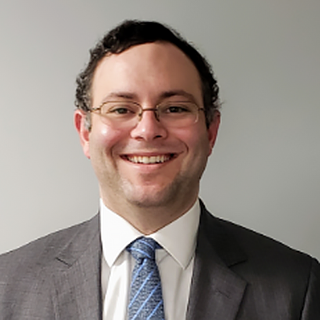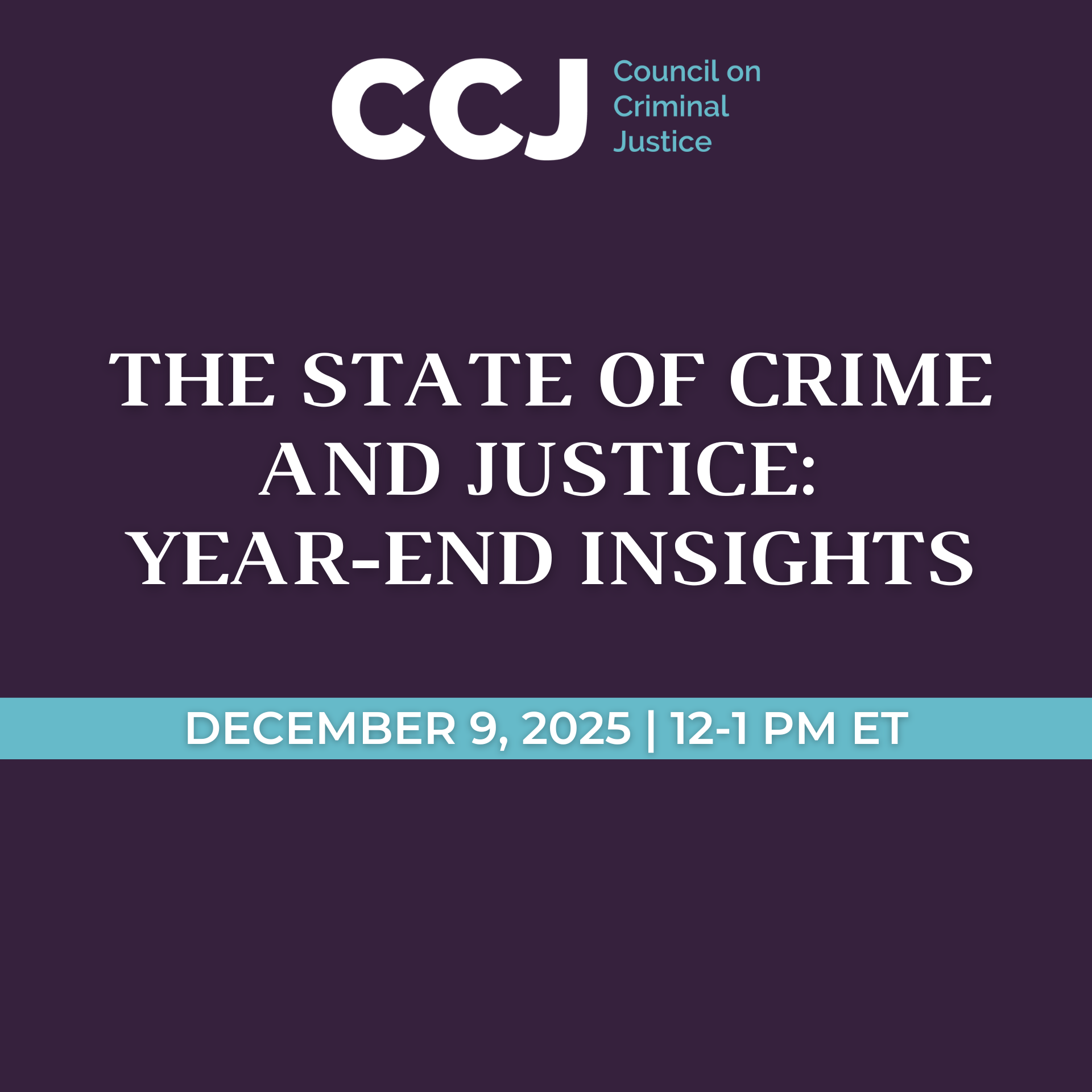Trends in Homicide:What You Need to Know
December 2023
Introduction
The Council on Criminal Justice’s mid-year crime trends report found that murders in 30 large American cities declined by 9.4% in the first half of 2023 compared to the first half of 2022. If this trend continues through the end of 2023, the nation will have experienced one of the largest single-year homicide reductions in the era of modern record keeping. CCJ’s full report on trends in homicide and other crimes will be released in January.
This brief, prepared for CCJ’s Crime Trends Working Group, explores data on homicide from multiple sources. It examines victimization by age, race, and sex, as well as changes in arrests, clearance rates, the victim-offender relationship, and other key measures. Drawing on Working Group presentations and conversations, the brief also explores possible explanations for the rise in homicide seen during the height of the pandemic and social justice protests of mid-2020, and, in most cities, its subsequent decline.
The recent decrease in murders is encouraging. But far more can and must be done to achieve lasting reductions in homicide and other violent crime. Government agencies and community organizations are testing myriad approaches. CCJ’s Task Force on Policing and Violent Crime Working Group highlighted numerous evidence-based strategies and reforms to improve law enforcement, increase police collaboration with community organizations, and strengthen the overall effectiveness of violence reduction efforts. Multiple jurisdictions have drawn on this guidance. And, in December, the U.S. Department of Justice released a violence reduction “roadmap” based on the Ten Essential Actions framework produced by the Violent Crime Working Group. The roadmap organizes the department’s grant programs, training and technical assistance, and other resources by the ten action steps; the Police Executive Research Forum will assist jurisdictions seeking to implement the recommended strategies.
Trends in Homicide: What We Know
- The U.S. homicide rate began to trend upward in 2015 after a long-running decline. After reaching a peak in 2021, it remained 24% higher in a sampling of 30 cities in the first half of 2023 than it was before the COVID-19 pandemic.
- People aged 15 to 19 years old were three times more likely to die by homicide in 2020-2021 than in 1960.
- Black males were eight times more likely and Black females were four times more likely to die by homicide in 2020-2021 than their White counterparts.
- Arrests of Black adults for homicide dropped 65% from 1980 to 2020, but Black people were six times more likely to be arrested for homicide in 2020 than White people.
- Since 2020, more than three-quarters of homicides have been committed with guns. This marks an increase from 1980 to 1990, when firearms were used in fewer than two-thirds of reported homicides.
Monthly Homicide Rates in 30 Cities, January 2018 – June 2023
Homicide rates spiked by 68% from April to July 2020 in a sample of 30 American cities. By the end of 2021, rates were an average of 44% higher than in 2019. The average rate began receding in 2022 but was still 24% higher in the first half of 2023 compared to the first half of 2019.
Homicide Rates, 1960 – 2022
The U.S. homicide rate peaked in 1980 at 10.2 per 100,000 people. After falling then rising to another peak in 1991, the rate dropped to a low in 2014 similar to levels in the mid-1960s. An upward trend began in 2015, however, and homicide increased by 30% from 2019 to 2020, the largest single-year increase since 1960. After a small increase in 2021, the rate decreased 9% in 2022 to 6.3 per 100,000 people.
Homicide Victimization by Age Group
Homicide victimization for all age groups has increased since 1960. While those between the ages of 20 and 24 remain the most likely group to die by homicide, the rate of victimization for those between the ages of 15 and 19 was three times higher in 2020-21 than it was in 1960.
Homicide Victimization by Race and Sex
The rate of homicide victimization for Black males was more than eight times higher than for White males in 2020-2021. Black female rates were four times higher than rates for White females for 2020-2021.
Homicide Arrests by Race
The homicide arrest rate of Black adults fell by 65% from the 1980s to 2020, the largest decrease seen among these four groups. In 2020, Black adults and juveniles remained six times more likely to be arrested for homicide than White adults and juveniles.
Homicides Committed with Firearms
In 2021, 78% of homicides were committed with a firearm, the highest proportion since 1980. In the 1980s, the share of homicides committed with a gun hovered around 60%, compared to 70% between 2010 to 2019.
Homicide Clearance Rate
Unknown circumstances and victim-offender relationships make it harder for detectives to solve murder cases, and vice versa: lower case clearance rates make it harder to determine circumstances and relationships. The homicide clearance rate declined 9% in 2020, continuing a downward trend that began in the 1960s. In 2022, the clearance rate was at about 50%, meaning that just half of murders resulted in an arrest and fewer than half result in a conviction.
Victim-Offender Relationship
The relationship between victims and offenders also has become increasingly unclear in recent years. While the share of unknown relationships spiked in the early 1990s, is has hovered between 30% and 40% over the past 40 years. In 2020 and 2022, however, police were unable to determine the relationship in more than 50% of cases.
Circumstances of Homicide
Notes: Less common homicide circumstances are excluded in the chart; as a result, percentages do not total to 100%. Data come only from law enforcement agencies that reported at least six months of data for a given year. Due to missing unknown circumstance data, the graph begins in 1985.
The circumstances surrounding homicides have become less clear over time. The share of homicides with an “unknown” circumstance doubled from 22% in 1985 to 43% in 2022. In cases where the circumstances were reported, about 15% of homicides over that period were “felony homicides,” or killings committed during the course of another offense, such as robbery, rape, or drug trafficking. The peak felony homicide rate of about 20% came during the height of the crack cocaine epidemic from 1989 to 1992. According to police reports, felony homicides accounted for 10% of murders in 2020 and 7% of murders in 2022. The share of homicides attributed to “arguments” steadily declined over the period, from 33% in 1985 to 22% in 2022, a decrease of one third.
POSSIBLE EXPLANATIONS
Routine Activity Theory
Police Legitimacy
The homicide increase in many cities began almost immediately after the murder of George Floyd by Minneapolis police officer Derek Chauvin, as protests erupted across the country. There was a similar, if smaller, jump after the police killing of Michael Brown in Ferguson, MO. These patterns have led some experts to argue that a decline in the perceived legitimacy of law enforcement, combined with an increase in “legal cynicism” (or the perception of police as disrespectful, unfair, and biased), fueled the homicide surge. Some have expressed the belief that high-profile police killings spread legal cynicism to communities less exposed to violence. One working group member, however, questioned that explanation, noting that police legitimacy was already low in areas with high levels of violence.
De-Policing
Working Group members discussed the idea that “de-policing” caused the homicide increase that began in the summer of 2020. The most common form of this theory is that officers pulled back from enforcement actions in response to public protests against police misconduct and fear of catching the coronavirus, and because their ranks were depleted by COVID—all of which resulted in less accountability for community violence. Arrest rates did fall sharply during this period, yet during this same period, property crimes fell. This suggests that something more specific was driving the increase in homicide.
Working Group members explored a more nuanced theory. Some members noted that police did pull back from interacting with the public in the early days of the pandemic. This pullback reflected increases in the number of officers who became ill and leadership directives in some departments intended to reduce the risk of infection from police-civilian interactions. Prosecutors and court systems also curtailed their activities. In this sense, “de-policing” did occur.
Gun Sales
Members also hypothesized that a large increase in gun sales in 2020 may have led to additional murders. During this period, so-called “time to crime” periods decreased, with police recovering 38,777 guns within three months of their purchase in 2020 nationwide, nearly twice the number as the year before. This suggests that newly-purchased guns were turning into crime guns much faster than had been the case in the past. Undercutting that argument, however, is the fact that 76 percent of new firearm purchases were made by existing gun owners.
Bail Reform and Progressive Prosecution
Some observers have blamed changes in bail practices, other criminal justice reforms, and less vigorous prosecution by so-called “progressive” prosecutors for the homicide spike. The fact that homicides rates had declined over an extended period before the beginning of the pandemic led some members to question the validity of that theory. They cited studies such as this one, which found no impact of bail reform on rearrest or overall crime rates in New York. But others were more supportive of this explanation, noting that local law enforcement frequently complained of rearresting offenders and charging them with increasingly serious crimes during the period of the homicide increase. It remains unclear whether these trends were the product of prosecutorial decision-making or the limited capacity of COVID-era court systems.
Drug Market Disruption
Members also noted that violent gun crime appeared, in some areas, to be correlated with changes in drug markets. Drug markets were disrupted by the pandemic because many non-drug market sources—including bars, nightclubs, and job sites—were closed or limited. The closures likely led more people to pursue drugs via street markets. The spread of fentanyl also likely affected drug markets. Though drug market data is difficult to obtain, some research has shown that the sharp increase in gun violence was associated with high drug market activity.
Crime-Reduction Interventions
Local and state authorities in many areas have responded to the homicide surge with considerable urgency, deploying new community violence intervention initiatives and focusing law enforcement on the small number of people deeply involved in gun violence. Several members believe these interventions likely contributed to the homicide decline.
Member Perspectives




HOW DO WE RESPOND?
In response to the rise in violent crime, CCJ launched a Violent Crime Working Group in July 2021. Composed of a diverse range of leaders, the Group dedicated itself to saving lives by producing anti-violence guidance that is timely, relevant, and reliable. The Group met 11 times, consulted with other leading experts, produced three reports on national crime trends, held two live public web events, and issued seven bulletins highlighting its key findings and featuring concrete recommendations to improve policy and practice in this critical area. The Group was chaired by CCJ Senior Fellow Thomas Abt, who is now founding director of the Center for the Study and Practice of Violence Reduction at the University of Maryland, College Park.
In its final report, the Group identified Ten Essential Actions that cities can take now to reduce community gun violence. This list is not comprehensive; instead, it highlights the actions members thought to be the most likely to make the greatest immediate impact on violence. Listed in roughly sequential order, the actions are short-term measures that can be carried out within a year, typically without new legislation or enormous expenditures. The Group made clear the actions are not a substitute for longer-term strategies and investments that can address poverty, inequality, racism, and other underlying systemic causes of crime and violence.
As noted above, in December the U.S. Department of Justice released a violence reduction “roadmap” based on the Ten Essential Actions framework. The roadmap organizes the department’s grant programs, training and technical assistance, and other resources by the ten action steps; the Police Executive Research Forum was selected to assist jurisdictions seeking to implement the recommended strategies.
Ten Essential Actions Cities Can Take to Reduce Violence Now
1. Set a clear goal.
Commit to saving lives by stopping violence. Homicide and other violent crimes devastate cities in human and economic terms. In Chicago in 2021, homicide collectively cost the city almost $8 billion in criminal justice and medical costs, lost wages and earnings, diminished property values, and reduced quality of life. And that is just the price of murder. The human and economic costs of all violent crime run far higher. Preserving life by preventing lethal or near-lethal violence is the primary goal of any true anti-violence effort, and progress should be measured in concrete terms: fewer homicides and non-fatal shootings. City leaders should commit to tangible reductions in these measures. Annual 10% reductions in homicides and non-fatal shootings are realistic goals.
2. Identify the key people and places driving the violence.
In every city, violence concentrates among small sets of individuals, groups, and locations. To effectively reduce violent crime, cities should begin with a rigorous problem analysis like the one completed in Oakland. These analyses draw on incident reviews, shooting data, law enforcement intelligence, and social network mapping to identify the people and groups most likely to become involved in a violent incident. Also critical: mapping the occurrence of such incidents to reveal the micro-locations, or “hot spots,” where most violence happens. These analyses should then be reviewed by trained street outreach workers and other non-police individuals with relevant experience. This foundational work is critical to creating a shared understanding of a city’s violence and guiding collaborative efforts.
3. Create a citywide plan for engaging key people and places.
Addressing violence demands a multi-disciplinary response and a strategic plan to effectively organize these efforts, such as the paired plans from the Dallas Mayor’s Office and Police Department. Most critically, leaders must coordinate stakeholder activities focused on the highest-risk people and places. Plans should be practical and actionable, detailing concrete commitments: for key people and in key places, who will do what, by when? These commitments should use SMART (specific, measurable, achievable, relevant, and time-bound) criteria. Plans should also identify which activities will not be undertaken in order to maintain focus, as trying to do too much often results in failure. Finally, plans must emphasize partnership, particularly between members of law enforcement and impacted communities, where relationships are often severely strained.
4. Engage key people with empathy and accountability.
Those individuals and groups at the highest risk of violence must be placed on notice that they are in great danger of being injured, killed, arrested, and/or incarcerated. This message must be delivered with a combination of empathy and accountability. Supports and services must be offered so people have something better to say “yes” to, but it must be made clear that further violence will not be tolerated. Outreach workers in neighborhoods and hospitals where shooting victims are recovering can defuse conflicts, connect people to services, and serve as crucial go-betweens for a city and some of its most disconnected citizens, as they do in New York City. Cognitive behavioral interventions like those used by READI Chicago can help even the most traumatized individuals begin to heal and make better life decisions. Proactive policing, like the “precision policing” effort also in New York City, can put high-risk people and groups on notice that they are being watched and that further violence will be met with swift and certain consequences. Focused deterrence strategies, such as Oakland Ceasefire, are a successful framework for all such engagement, blending customized supports for high-risk individuals with targeted sanctions, as needed. Finally, efforts like those in Boston to improve homicide and shooting clearance rates can deter future violence and disrupt cycles of retaliation.
5. Address key locations using place-based policing and investment.
A combination of place-based policing and investment can calm violent spaces. Police are necessary to disrupt existing cycles of violence and stop others from starting. But such short-term actions must be supplemented and quickly replaced by place-based interventions and investments to change the nature of violent micro-locations and the communities in which they are located. Problem-oriented policing, conducted in collaboration with residents as demonstrated by the Community Safety Partnership in Los Angeles, can begin the process. Environmental crime prevention approaches such as cleaning-and-greening initiatives in Philadelphia as well as changing traffic patterns and repairing, upgrading, and adding streetlights can also influence the trajectory of these areas. Finally, targeted investments and deployment of resources must be made to improve education, employment, healthcare, housing, transportation, and other socioeconomic factors that can give rise to crime and violence in the first place.
6. Place responsibility for violence reduction efforts at the top.
Every city suffering from high rates of violent crime should have a permanent unit dedicated to violence reduction operating inside the mayor’s office, with senior leadership reporting directly to the mayor. These units, such as the Office of Gang Reduction and Youth Development (GRYD) in Los Angeles, can provide direct services as well as administer funding and should act as a hub for city anti-violence efforts. Housing the unit outside the mayor’s office or placing intermediaries between the mayor and the unit’s leadership will significantly diminish performance and long-term viability across administrations. These units must be sustainably staffed and substantially funded in order to be successful long-term. Within law enforcement agencies, chiefs and other top leaders must demand a consistent focus on preventing violence, not just making arrests, and on working with citizens and community partners. Effective management also includes rewarding officers for outcomes like reduced victimization, rather than outputs like the number of pedestrian or car stops they make. Similarly, non-law enforcement leaders such as those running community-based anti-violence organizations should maintain a focus on anti-violence outcomes, not outputs such as services delivered.
7. Emphasize healing with trauma-informed approaches.
Gun violence disproportionately affects the poor and powerless in our society. In certain communities, Post-Traumatic Stress Disorder is more common among residents than among veterans of the wars in Afghanistan, Iraq, or Vietnam. Victims of violent crime are more likely to be victimized again, and many victims are subject to multiple forms of violence, known as polyvictimization. Finally, those exposed to chronic violence are more likely to perpetrate violence themselves. Agencies working with victims and survivors of violent crime should use a trauma-informed approach, such as the model used by the Trauma Recovery Center in San Francisco. This means acknowledging and recognizing the impacts and symptoms of trauma and ensuring that supports and services are delivered in a way that does not retraumatize victims. Law enforcement officers also experience trauma and benefit from such approaches as well.
8. Invest in anti-violence workforce development.
Too many in the violence reduction field have worked too long without proper support or recognition. Many street outreach workers, for instance, work for little pay, no benefits, and with minimal opportunity for advancement. Most do not receive sufficient support for addressing the trauma – direct and vicarious – that comes with anti-violence work. Investing in a professional and sustainable anti-violence workforce means providing adequate salaries, benefits, and prospects for upward mobility through effective training and education. Law enforcement agencies, meanwhile, are suffering from serious morale, retention, and recruitment challenges. That workforce also needs additional support to perform at its best.
9. Set aside funding for new stakeholders and strategies.
There is a large base of rigorous evidence about what works, and what doesn’t, when it comes to violence reduction. That said, there is still room for learning and improvement. While most funding should be reserved for strategies with demonstrated track records of success, some portion of anti-violence dollars should be set aside to promote innovation. Development funds should be created to nurture new leaders and organizations with small grants, training, and technical assistance. Innovation set-asides can support new anti-violence strategies intended to establish proof of concept and pave the way for additional funding. Intermediary, pass-through, and fiscal sponsorship agreements can ensure that less-established organizations can still participate in city efforts.
10. Commit to continuous improvement based on data, evidence, and peer-to-peer learning.
Strategies must be tested to see if they actually stop violence and save lives. Plans must be reviewed and, if necessary, revised. Leaders should embrace a learning culture that is able to recognize when strategies are not working and shift course – without starting over from scratch. Data must be gathered and research partners should be engaged early to assess performance, working in close consultation with police and community partners. Reducing violence requires a diverse range of stakeholders, and the best way to focus and maximize their efforts is through information-sharing networks. In today’s interconnected world, networks can promote peer-to-peer learning across bureaucratic and jurisdictional boundaries. Efforts like the National Network for Safe Communities and the newly-established National Offices of Violence Prevention Network can also promote fidelity to evidence-informed practices, encourage collaboration, spur innovation, and build capacity for action. Finally, networks can serve as vehicles for broader institutional and systemic change.
State and Federal Support
Most anti-violence efforts happen at the local level, but state and federal support are key to help cities succeed in their front-line anti-violence campaigns. States and the federal government can support the essential actions outlined above through messaging and convening, grantmaking and fiscal incentives, regulation and legislation, and through the direct actions of certain agencies.
- Help cities set the right goals. Prioritizing violence reduction can be politically difficult for local leaders seeking to portray their cities as safe and healthy places to live, work, and raise families. State and federal leaders can encourage their local counterparts with clear messaging as well as fiscal incentives for doing what is necessary, not politically expedient. This means emphasizing clear anti-violence goals, evidence-informed strategies, and partnership between law enforcement and community groups.
- Support evidence-backed strategies, workforce development, and technical assistance while also investing in innovation. Most state and federal dollars invested in local violence reduction efforts should fund proven strategies and the capacity building and training needed to sustain and expand those strategies. At the same time, resources must be made available for localities to pursue or enhance promising or emerging approaches to reducing violence. Also key is support for improving the quality and quantity of relevant data and research as well as peer-to-peer learning through convenings and information-sharing networks.
- Align state and federal actions with local anti-violence priorities. For state and federal agencies that work directly on anti-violence issues, aligning activities with local efforts is essential. State probation and parole agencies can create specialized caseloads to better supervise and support high-risk individuals, the FBI and U.S. Attorneys can coordinate with local law enforcement to incapacitate persistently violent individuals and groups, and health, labor, education, and other non-enforcement agencies can similarly focus their resources. A coherent, whole-of-government approach that identifies and engages the key people and places driving local violence is the goal.



